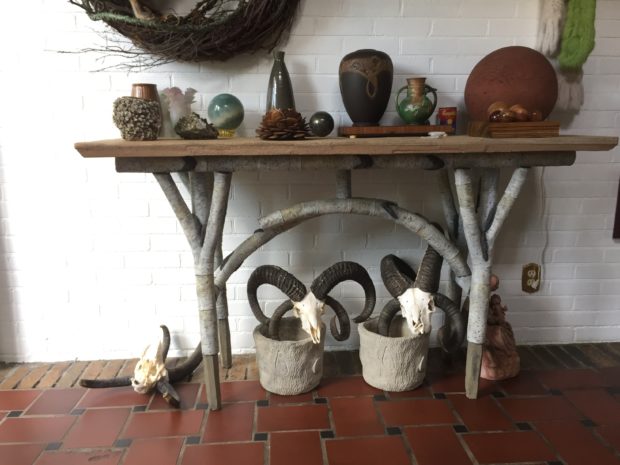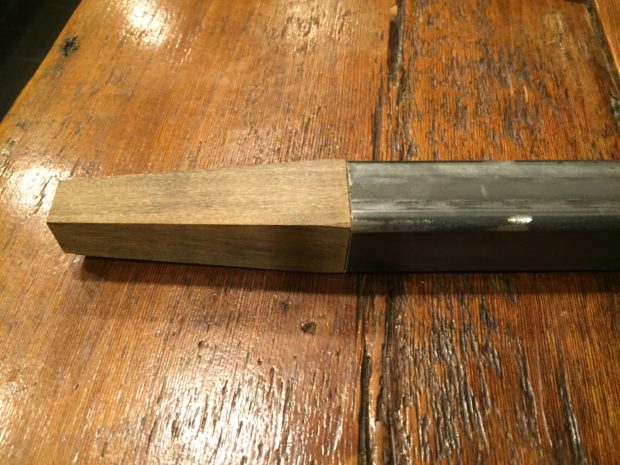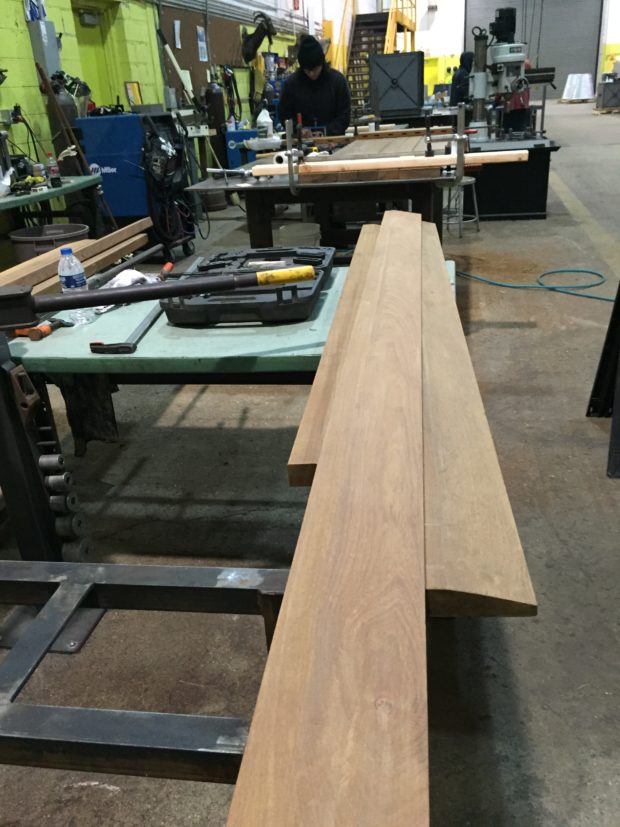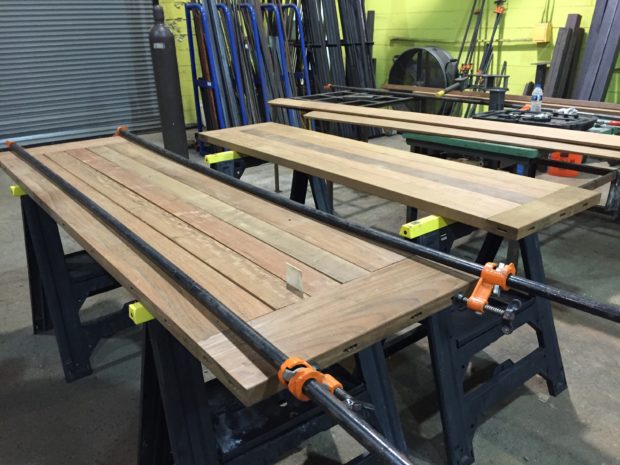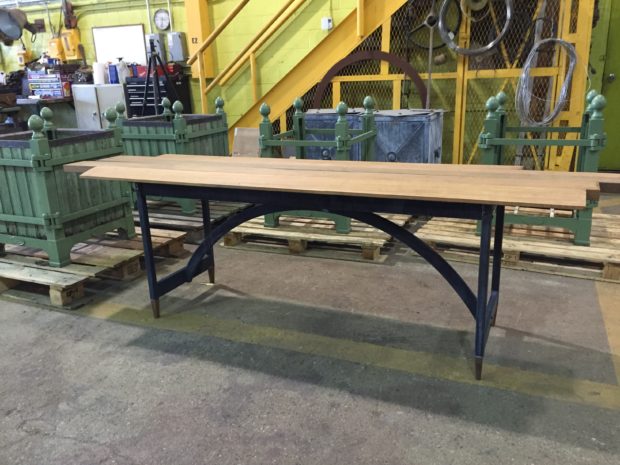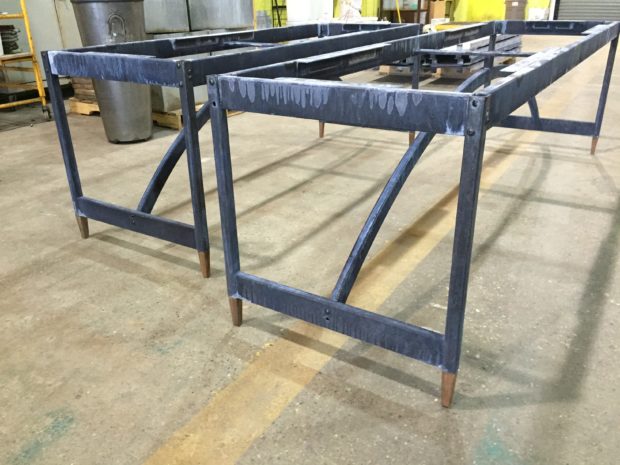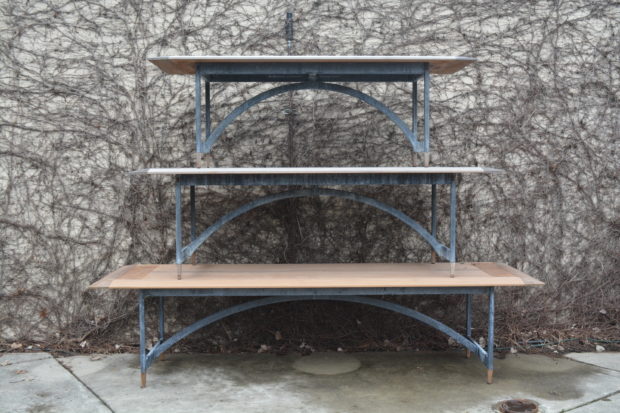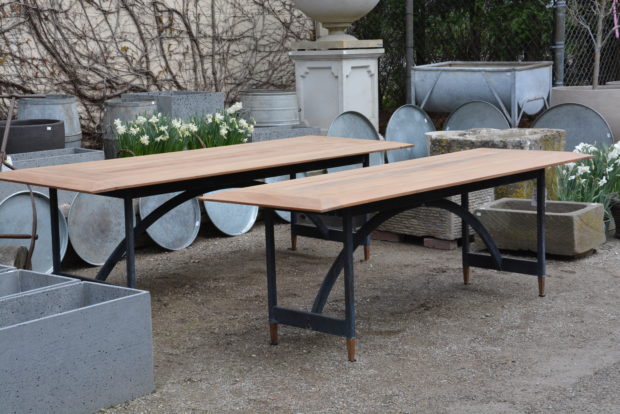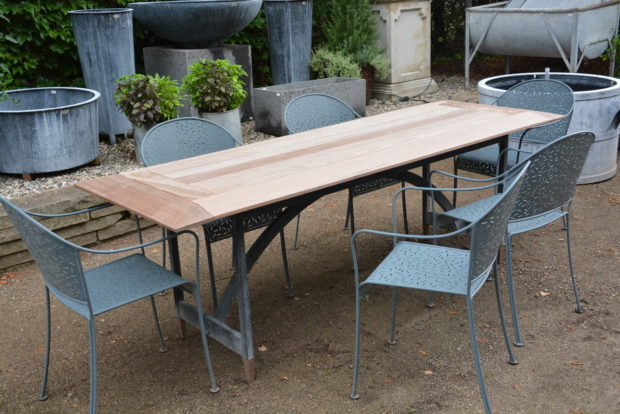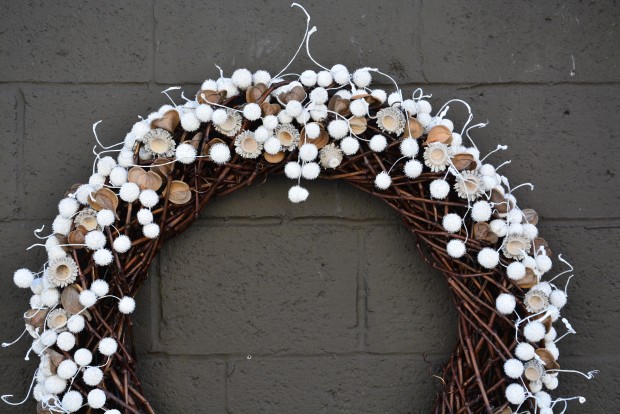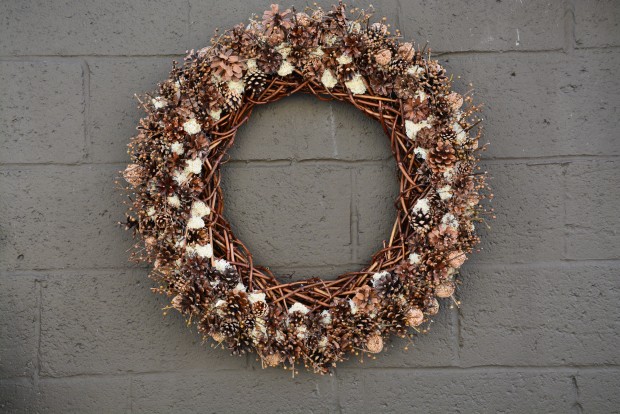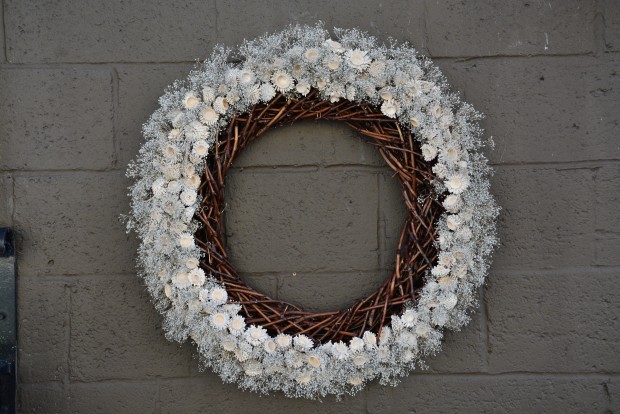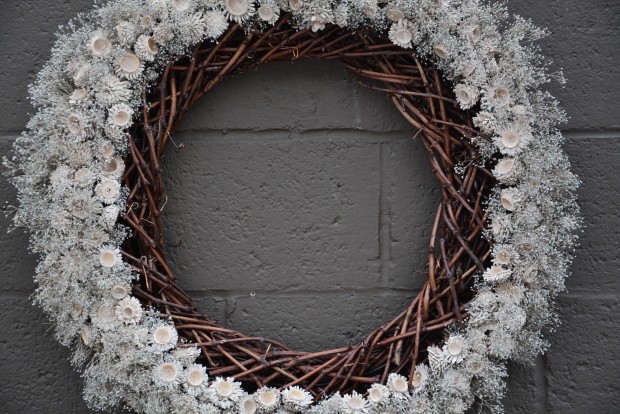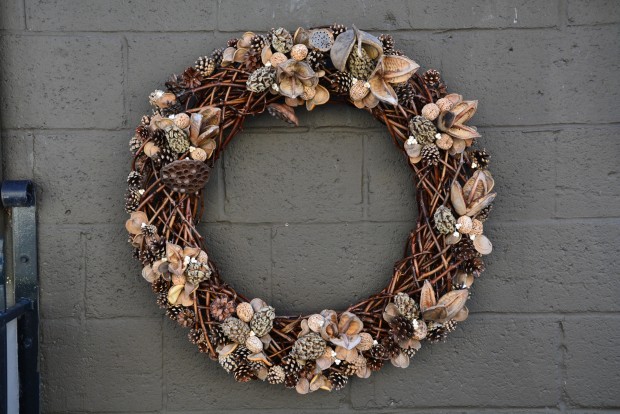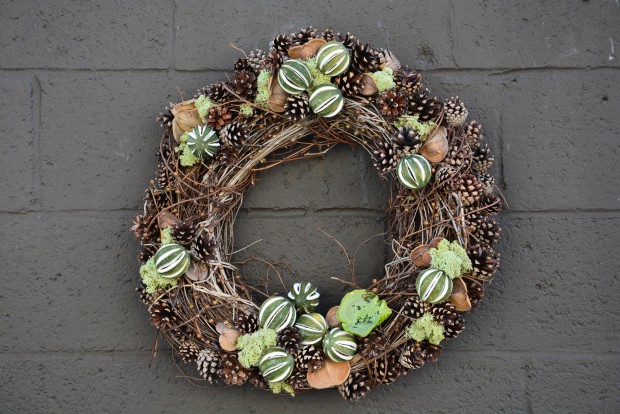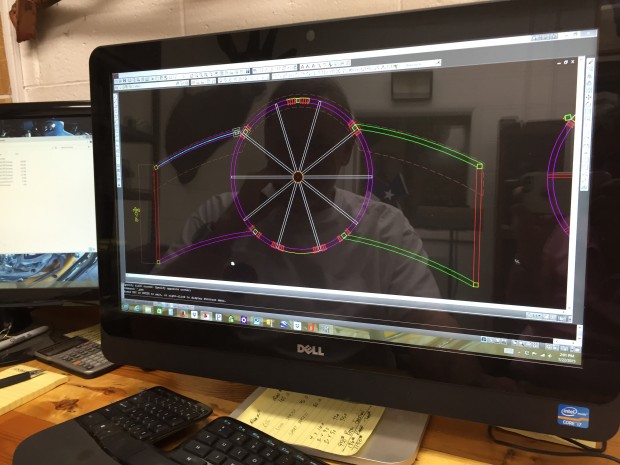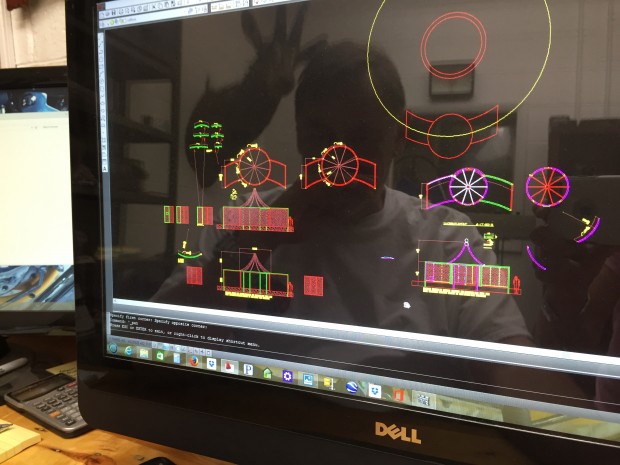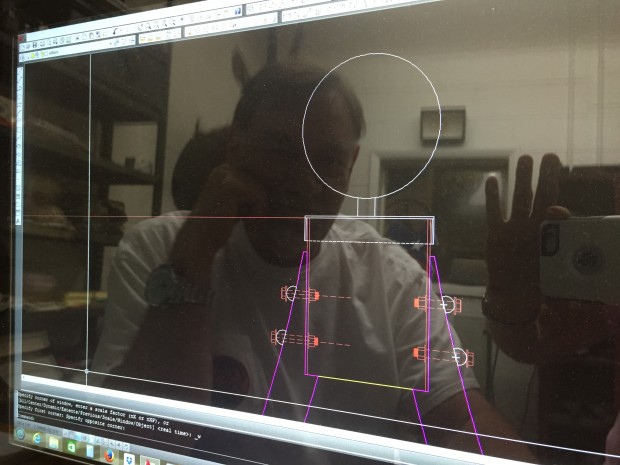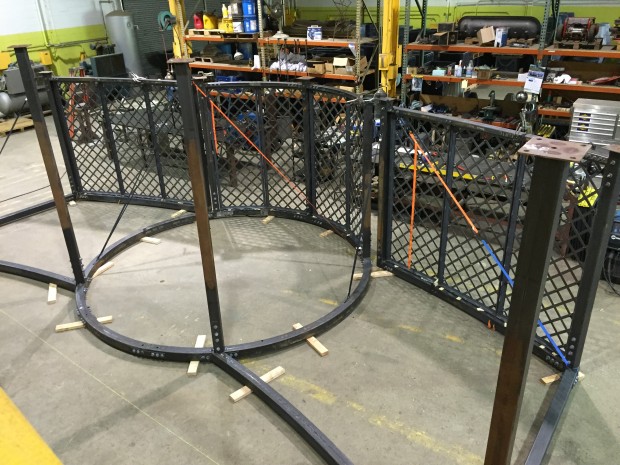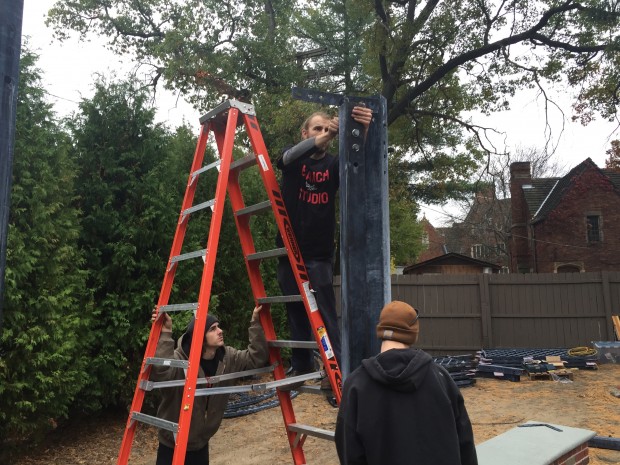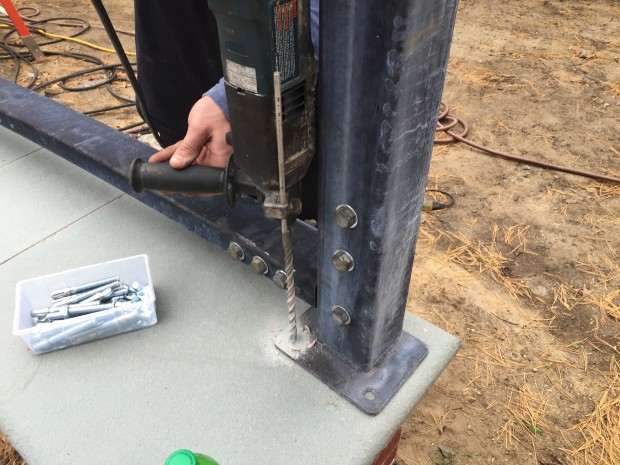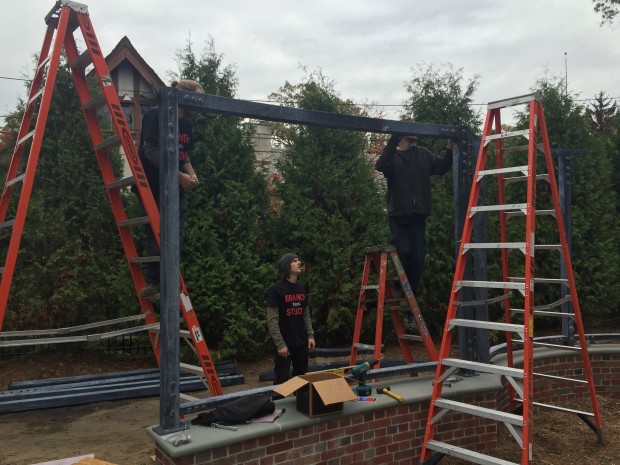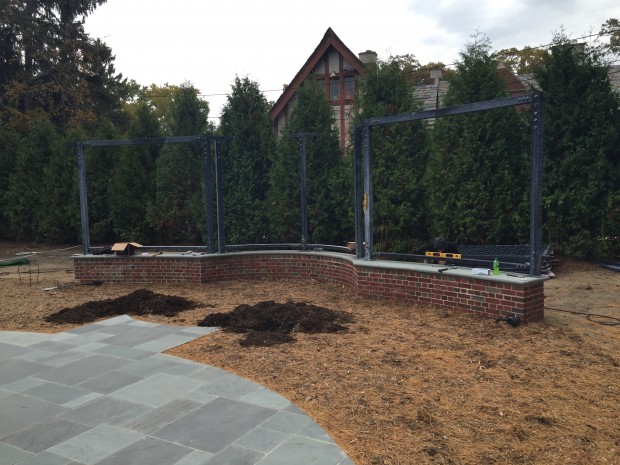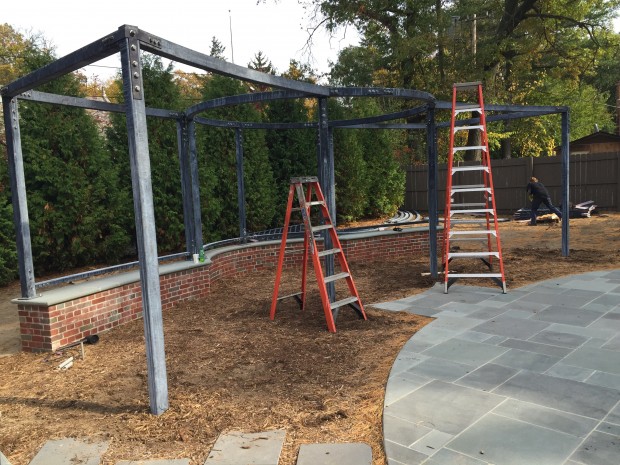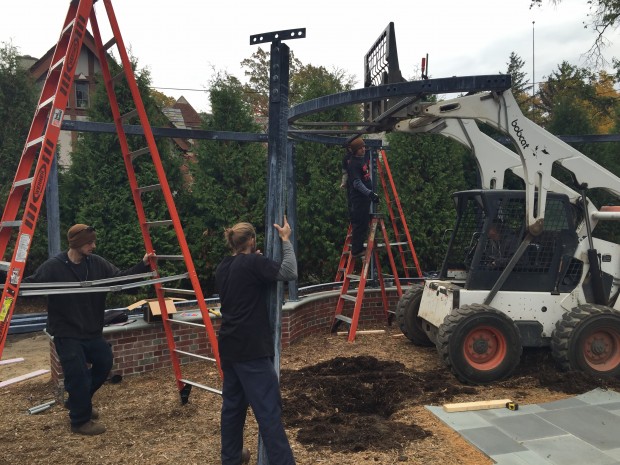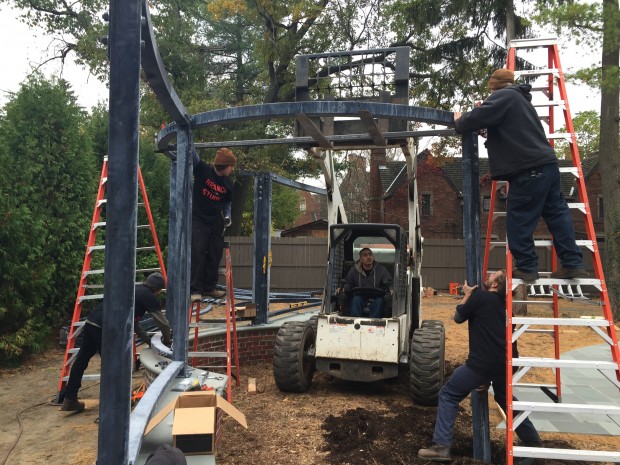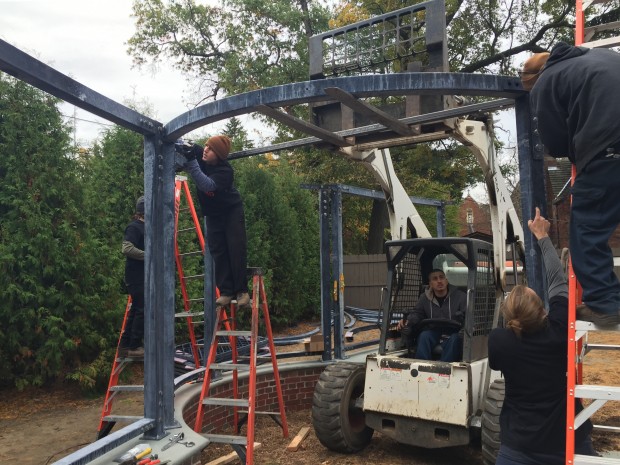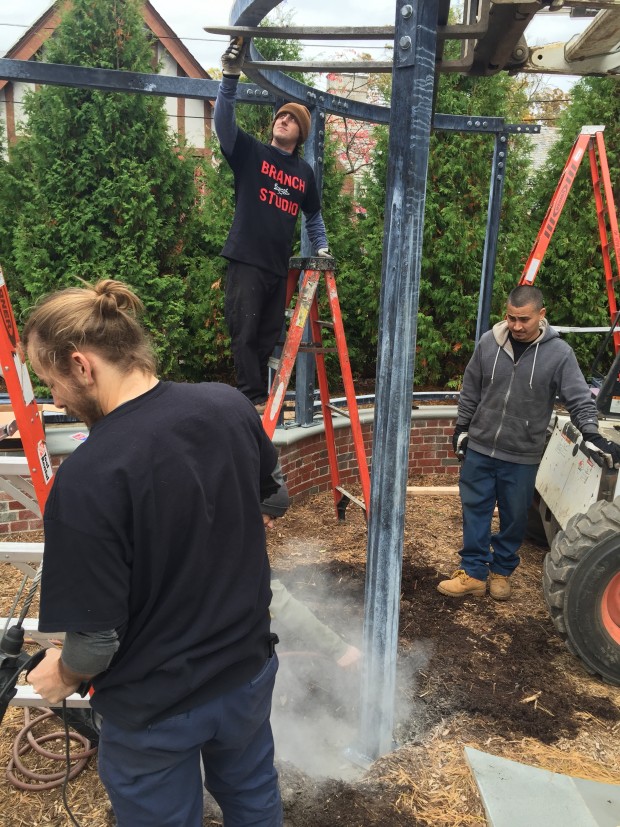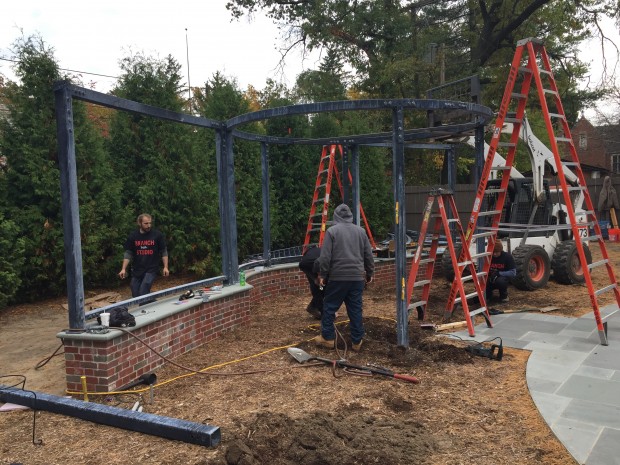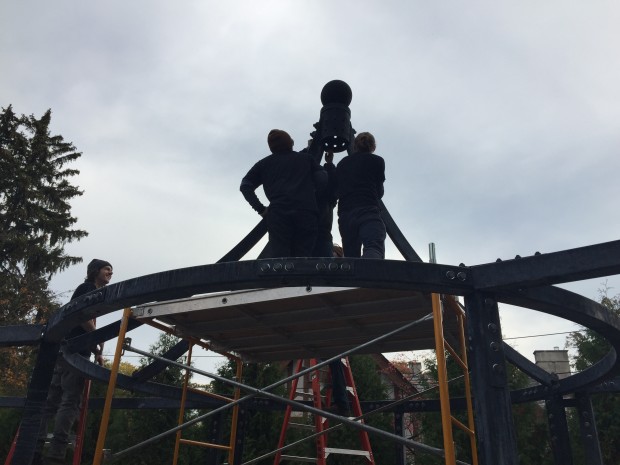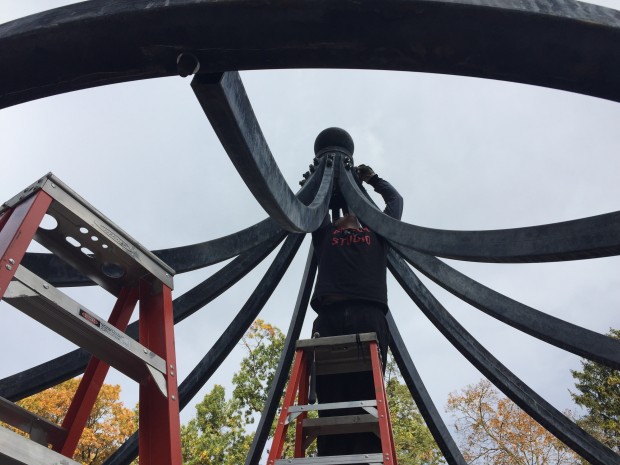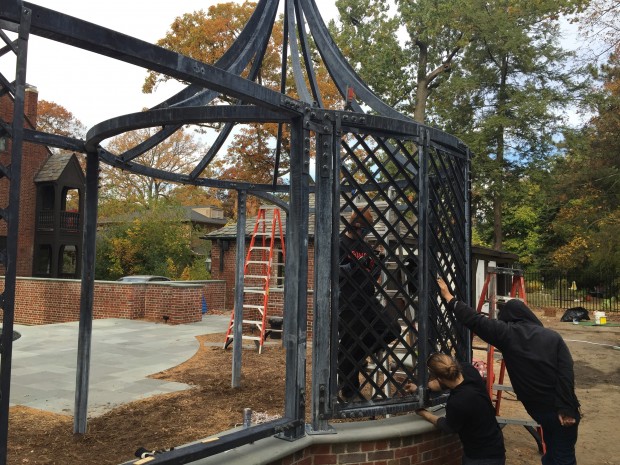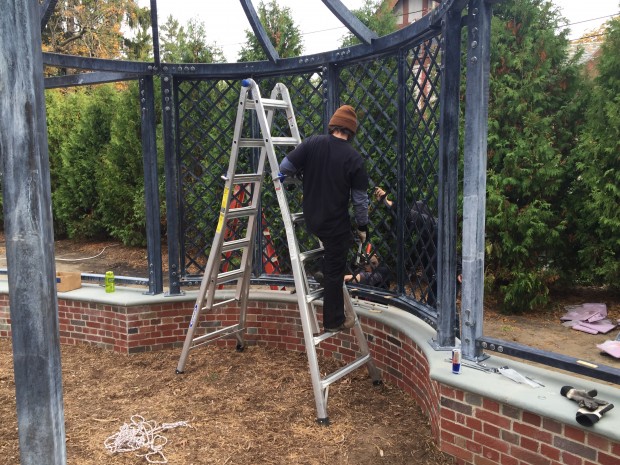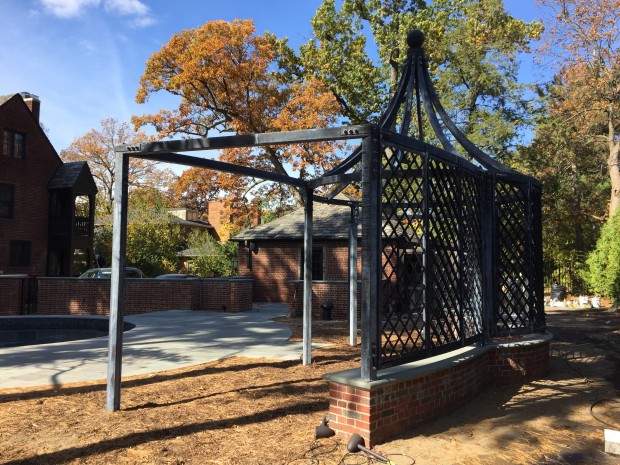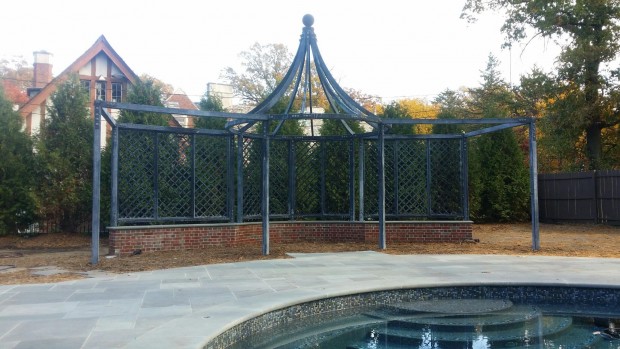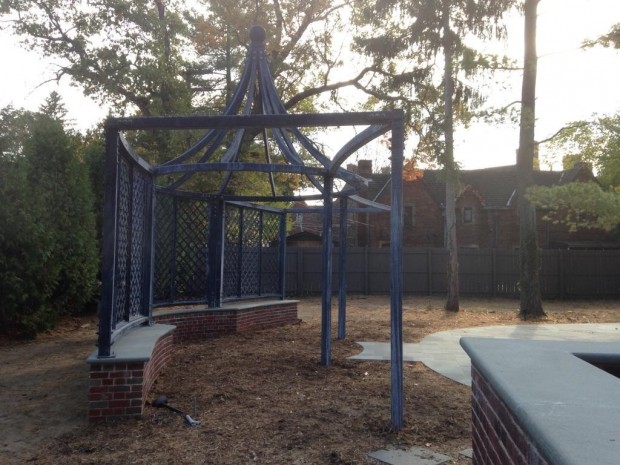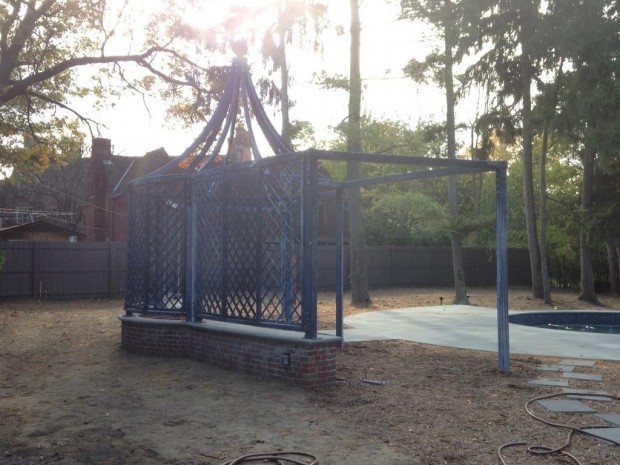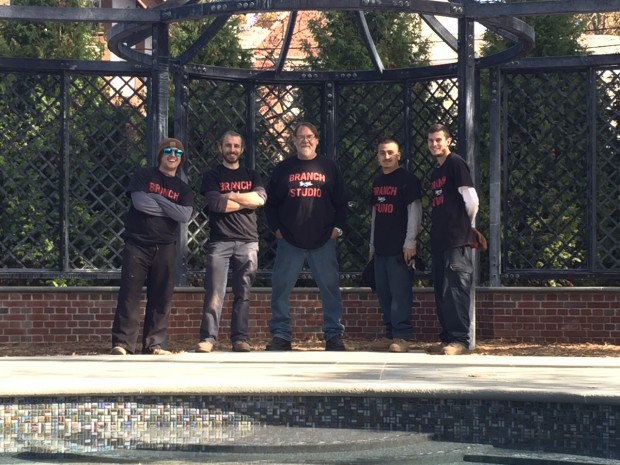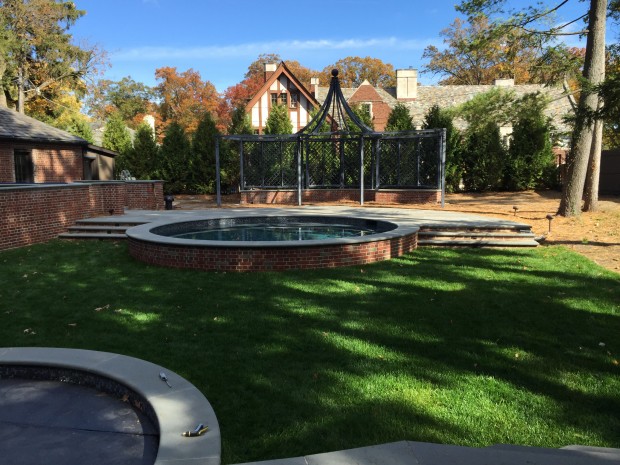 On the water today is a 40 foot container’s worth of goods for the garden that Rob bought in France last September. Some of what he bought is either antique or vintage. Other things are new. He buys what he treasures and can’t bring himself to leave behind. I like that about him. Our shipping agent in Paris collects what he buys wherever he shops in France. Some orders for new goods, no matter where they are sourced, are manufactured to order only. Thus he times his overseas shopping in the summer and early fall so we can take delivery prior to the spring season opening March 1. Once all of his purchases are packed and collected, arrangements are made to fill a container and send it on its way. It is incredible really, how much planning and traveling he does every year in support of amassing a beautiful and curated collection of objects.
On the water today is a 40 foot container’s worth of goods for the garden that Rob bought in France last September. Some of what he bought is either antique or vintage. Other things are new. He buys what he treasures and can’t bring himself to leave behind. I like that about him. Our shipping agent in Paris collects what he buys wherever he shops in France. Some orders for new goods, no matter where they are sourced, are manufactured to order only. Thus he times his overseas shopping in the summer and early fall so we can take delivery prior to the spring season opening March 1. Once all of his purchases are packed and collected, arrangements are made to fill a container and send it on its way. It is incredible really, how much planning and traveling he does every year in support of amassing a beautiful and curated collection of objects.
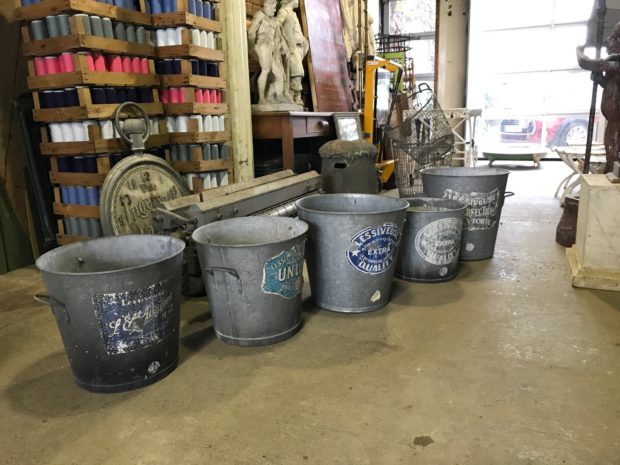 Rob turns over all of his invoices and buy sheets to our internet sales and service manager, Heather D, once he returns to the states. Just one of her many responsibilities involves coordinating pickups, packing and shipping of goods that come to the shop from abroad and in the US. Doing business internationally is a complicated job. Rob places orders and buys overseas, but payment for goods whether old or new is arranged by wire transfer of funds to our shipping agent. Our agent pays for what Rob has purchased when they pick up. Heather takes the hand off from Rob, and coordinates the shipping as quickly and gracefully as possible. I greatly admire that she coordinates with him in such a way that our overseas buying results in moving many items from various places in a European country to our doorstep in an efficient and timely way.
Rob turns over all of his invoices and buy sheets to our internet sales and service manager, Heather D, once he returns to the states. Just one of her many responsibilities involves coordinating pickups, packing and shipping of goods that come to the shop from abroad and in the US. Doing business internationally is a complicated job. Rob places orders and buys overseas, but payment for goods whether old or new is arranged by wire transfer of funds to our shipping agent. Our agent pays for what Rob has purchased when they pick up. Heather takes the hand off from Rob, and coordinates the shipping as quickly and gracefully as possible. I greatly admire that she coordinates with him in such a way that our overseas buying results in moving many items from various places in a European country to our doorstep in an efficient and timely way.
 The shipping from a big group of vendors/suppliers in Europe to our shop takes time. There are always problems, and negotiations. Heather handles this with aplomb. I am confident in saying that all of us representing Detroit Garden Works go to great lengths to bring beautiful garden ornament to our clients. Each person plays their part. Heather gets everything to us, best way. Rob sets the prices, and all of the sales staff pitch in to tag everything. Jenny photographs all of our new things for the Detroit Garden Works website. Dave, our business manager, handles the finances.
The shipping from a big group of vendors/suppliers in Europe to our shop takes time. There are always problems, and negotiations. Heather handles this with aplomb. I am confident in saying that all of us representing Detroit Garden Works go to great lengths to bring beautiful garden ornament to our clients. Each person plays their part. Heather gets everything to us, best way. Rob sets the prices, and all of the sales staff pitch in to tag everything. Jenny photographs all of our new things for the Detroit Garden Works website. Dave, our business manager, handles the finances.
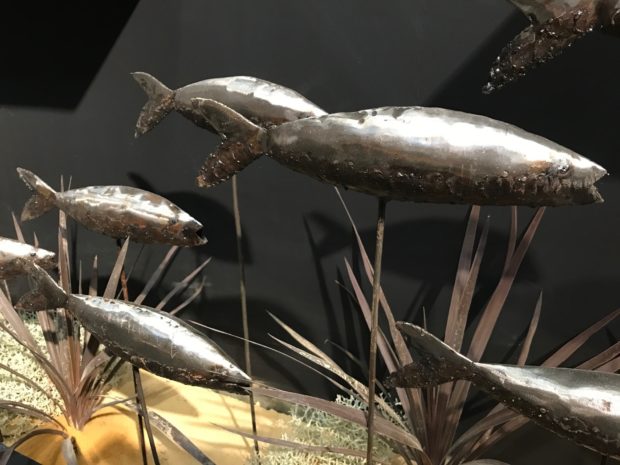 There are other jobs that need to be done. In preparation for our spring 2018 season opening, my entire landscape crew has been busy cleaning and repainting all of the shelving and trim with fresh color via several coats of paint. A new 8′ by 8′ skylight just inside our front door will be installed early next week. Our go to painter for difficult jobs has been engaged to repaint the ceilings in our front two showrooms-for the first time in 22 years. In preparation for his week’s long work, everything in those rooms had to be moved out, so a scaffolding on wheels can access every square inch of our 14 foot high ceilings. We are ready for him, ahead of his February 1st start date. We will be on hand to help him mask off the walls and the track lighting. As shipments and containers come in, the landscape company
There are other jobs that need to be done. In preparation for our spring 2018 season opening, my entire landscape crew has been busy cleaning and repainting all of the shelving and trim with fresh color via several coats of paint. A new 8′ by 8′ skylight just inside our front door will be installed early next week. Our go to painter for difficult jobs has been engaged to repaint the ceilings in our front two showrooms-for the first time in 22 years. In preparation for his week’s long work, everything in those rooms had to be moved out, so a scaffolding on wheels can access every square inch of our 14 foot high ceilings. We are ready for him, ahead of his February 1st start date. We will be on hand to help him mask off the walls and the track lighting. As shipments and containers come in, the landscape company
will take on the unpacking and placement of most every substantial and heavy item.
 Only Heather would say that importing goods from the European continent to the US is easy. It is in fact a complicated affair, dealing with multiple vendors, import rules and regulations and shipping. She is incredibly focused and for good measure and balance, incredibly patient. She communicates via telephone and the internet in such a friendly and productive way. All of my group and all of our vendors truly appreciate her candor, good humor, and problem solving skills. She has spent a good deal of time researching and engaging companies that can deliver our goods intact, and in a timely way.
Only Heather would say that importing goods from the European continent to the US is easy. It is in fact a complicated affair, dealing with multiple vendors, import rules and regulations and shipping. She is incredibly focused and for good measure and balance, incredibly patient. She communicates via telephone and the internet in such a friendly and productive way. All of my group and all of our vendors truly appreciate her candor, good humor, and problem solving skills. She has spent a good deal of time researching and engaging companies that can deliver our goods intact, and in a timely way.
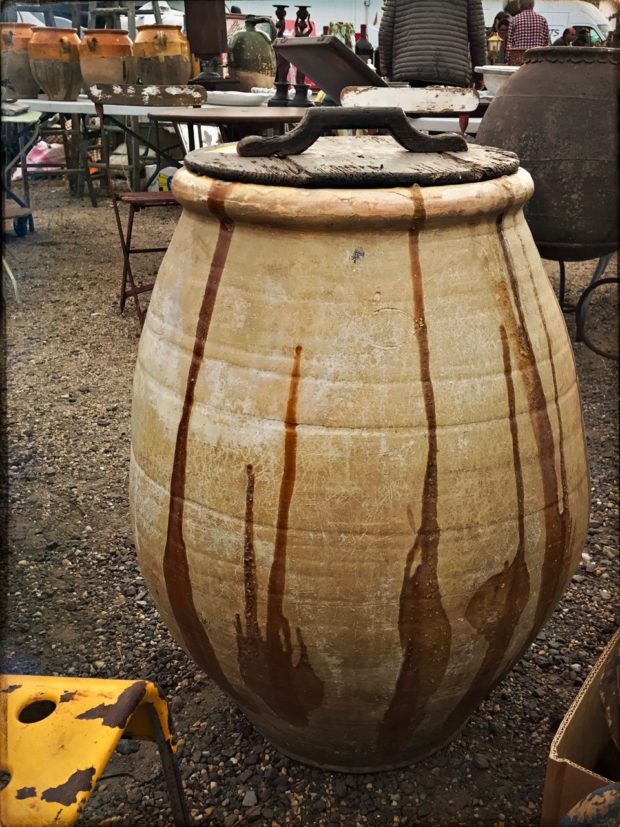 Heather also manages all of our internet inquiries, sales, and shipping arrangements for both Detroit Garden Works, and Branch We do business nation wide, with individual clients, and design firms. She is client services oriented, and she is not afraid to take on a project that is difficult or complicated. She has made it her business to become familiar with everything we offer for sale, so she can speak knowledgeably about them, and answer questions.
Heather also manages all of our internet inquiries, sales, and shipping arrangements for both Detroit Garden Works, and Branch We do business nation wide, with individual clients, and design firms. She is client services oriented, and she is not afraid to take on a project that is difficult or complicated. She has made it her business to become familiar with everything we offer for sale, so she can speak knowledgeably about them, and answer questions.
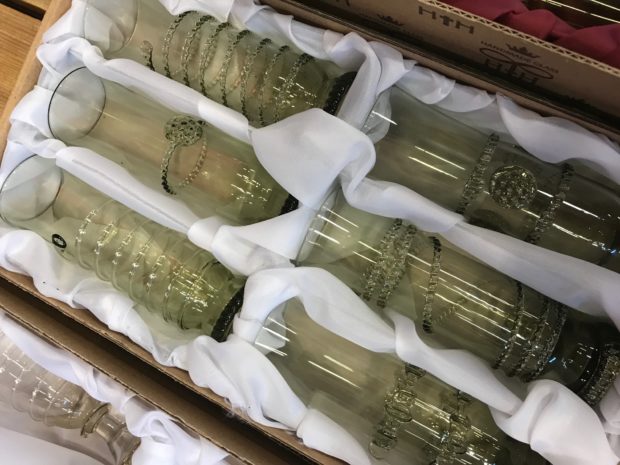 Why all this talk about Heather? I regret to report that Heather D, our internet sales manager, has accepted a request from her brother to return to the family business. Even though she will be sorely missed, I wish her well. She has graciously agreed to stay long enough train a new person for her position. I am very glad that our new internet sales manager to be will have the benefit of all of the systems she has put into place the past three years.
Why all this talk about Heather? I regret to report that Heather D, our internet sales manager, has accepted a request from her brother to return to the family business. Even though she will be sorely missed, I wish her well. She has graciously agreed to stay long enough train a new person for her position. I am very glad that our new internet sales manager to be will have the benefit of all of the systems she has put into place the past three years.
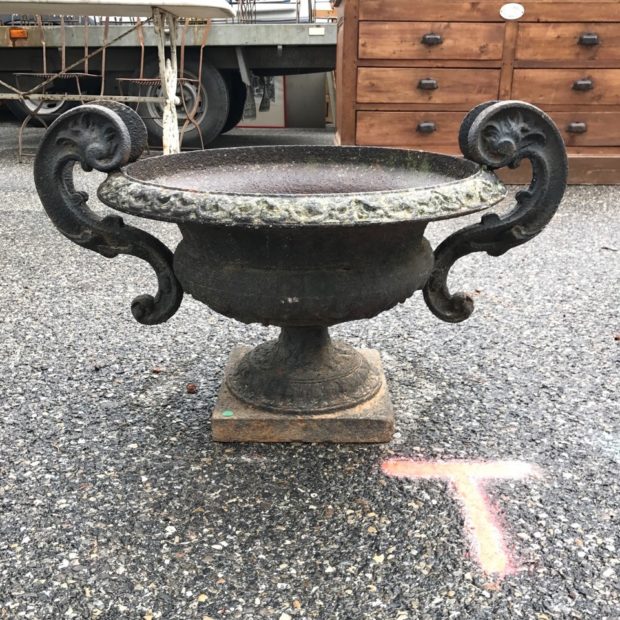 If you or someone you know is interested in a fast paced and variable sales and client services position that evolves day to day, supported by a great and closely knit group of people with a big passion for the garden, let me know by email at dsilver@detroitgardenworks.com I can email you the job description and responsibilities, so you can take a closer look at what would be involved. I am open to professional people from other fields, but a sense and interest in design is key.
If you or someone you know is interested in a fast paced and variable sales and client services position that evolves day to day, supported by a great and closely knit group of people with a big passion for the garden, let me know by email at dsilver@detroitgardenworks.com I can email you the job description and responsibilities, so you can take a closer look at what would be involved. I am open to professional people from other fields, but a sense and interest in design is key.
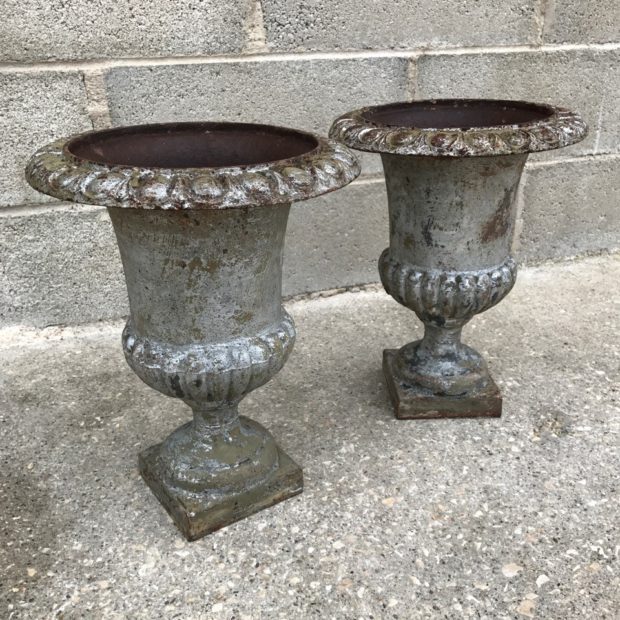 I am looking forward to the season to come. We have three containers set to arrive in the next month. It is hard to believe that February in the garden industry could be chaotic, but in our case, it is. We have to be ready for company March 1. The chaos is somewhat mitigated by the fun of seeing what is in all of those packages. It’s a birthday party for Detroit Garden Works.
I am looking forward to the season to come. We have three containers set to arrive in the next month. It is hard to believe that February in the garden industry could be chaotic, but in our case, it is. We have to be ready for company March 1. The chaos is somewhat mitigated by the fun of seeing what is in all of those packages. It’s a birthday party for Detroit Garden Works.
 I have had this photograph of a pair of French pots for months, but it is nothing what it will be to see them in person. I am very keen about these. A very traditional French pot shape has a decidedly contemporary look created by the glaze. Are these new or old? I have no idea, yet.
I have had this photograph of a pair of French pots for months, but it is nothing what it will be to see them in person. I am very keen about these. A very traditional French pot shape has a decidedly contemporary look created by the glaze. Are these new or old? I have no idea, yet.
 Rob is a fan of dolly tubs, and I understand why. They are happy in a contemporary or traditional setting. The planting space is generous. They are lightweight and weatherproof.
Rob is a fan of dolly tubs, and I understand why. They are happy in a contemporary or traditional setting. The planting space is generous. They are lightweight and weatherproof.
 This is a closeup of a new glaze from a French pottery. I can’t wait to see these in person too. These pots will be every bit as welcome in a variety of settings as a dolly tub, but they are heavy, and will need to come in for the winter in a northern garden. There will be someone who is not in the least bit daunted by this. For a while, I will be able to look at it, any time I choose. As for Heather, she gave a lot for the while she was with us. As much as I am reluctant to let go, there will be a new person who brings their own style and sensibility to the mix. I look forward to meeting them.
This is a closeup of a new glaze from a French pottery. I can’t wait to see these in person too. These pots will be every bit as welcome in a variety of settings as a dolly tub, but they are heavy, and will need to come in for the winter in a northern garden. There will be someone who is not in the least bit daunted by this. For a while, I will be able to look at it, any time I choose. As for Heather, she gave a lot for the while she was with us. As much as I am reluctant to let go, there will be a new person who brings their own style and sensibility to the mix. I look forward to meeting them.

